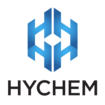Corrosion: React now!

How to prevent corrosion of your water assets
There are many different chemical and atmospheric conditions that can cause corrosion to asset infrastructure at water and wastewater treatment plants. Mineral acids, hydrocarbons, caustic solutions and aqueous salts can cause high amounts of damage to concrete and steel structures over short periods of time. This not only makes the structure unsafe, it also results in large repair costs of the asset.
In order to halt corrosion in its tracks and to prevent further deterioration, epoxy or polyurethane coatings are the most common, fast-drying solutions used in water and wastewater environments.
How do epoxies work?
Epoxy coatings consist of an epoxy resin which is reacted with a curing agent immediately before use. Once dry, the two solutions form a hard, chemically-resistant coating with all-round properties such as resistance to heat, moisture, acids, alkalis, solvents, weather and mechanical abrasion.
Ultra high build epoxies or surface tolerant epoxies can be applied over poorly prepared surfaces, and are therefore particularly suited to carry out maintenance or repair work.
Ultra high build epoxies are applied in thicknesses of one millimetre or more and are suitable for use in very severe environments such as chemical splash zones and bunding, sewer and wastewater piping, as well as offshore oil and gas installations.
Zinc epoxies have zinc powder as an ingredient in the epoxy resin, and are used as a common primer for protection against atmospheric exposure.
Surface preparation
To ensure best results when applying epoxy coatings, surface preparation is key. Regardless of the type of surface the epoxy is being applied to, preparation needs to make sure the surface is clean and contaminant free and has the right surface roughness or profile. This will ensure proper adhesion and prevent breakdown of the coating over time.
Concrete (tips from coating inspectors)
- The concrete substrate must be firm, clean and dry with a minimum compressive strength of 25MPa and a minimum surface tensile strength of 1.5MPa.
- New concrete must be allowed to cure for a minimum of 28 days.
- Remove all surface laitance, contaminants, existing coatings, curing compounds and any weak or loose materials.
- Prepare the concrete surface by Grinding, Shot Blasting, Scarifying, Ultra High Pressure Water Jetting or Scabbling to provide the appropriate concrete surface profile (CSP) for optimum mechanical keying.
- The extent of surface preparation required is dependent upon but not limited to the thickness of the coating system to be applied. It is highly recommended that all surface preparation is carried out in accordance with industry standards and publications such as NACE 02203 item No. 22420 or ICRI Technical Guideline No. 03732.
Environmental conditions
Temperature and the surrounding atmospheric conditions play an important role in the curing process of all epoxy products. In low temperatures or high humidity conditions the final cured surface finish can be adversely affected. This could result in poor gloss retention, discolouration over time, poor overcoatability and intercoat adhesion. Quite often these conditions will result in the formation of a white film over the surface, which becomes evident after contact with water. This chemical reaction with the atmosphere is commonly referred to as “amine bloom” or “amine blush”.
If this occurs, the existing coating will need to be abraded to remove the affected surface to ensure the adhesion of subsequent applications. In some cases partial or complete re-priming may be necessary.
To minimise an unsatisfactory cure, the following indicative application conditions should be observed with respect to temperature and humidity levels.
- 21°C and less than 85% humidity
- 10°C and less than 75% humidity
The substrate temperature should also be at least 3–5° C above the dew point during the curing phase.
Industry standards recommend the accurate recording of environmental conditions such as substrate and air temperatures, humidity levels and dew point readings during both the application and curing processes. Full material warranties cannot be provided unless all the relevant data has been recorded accurately.
Other standards
As epoxy is affected by moisture during cure, water content of the concrete should be such that it passes the ASTM D4263 plastic sheet test. This test involves taping an 18-inch (460mm) square of polyethylene film onto a concrete slab and waiting at least 16 hours. Afterward, the underside of the sheet is examined for signs of moisture. Any moisture condensation or observable darkening of the colour of the concrete underneath the sheet suggests excessive moisture and means the slab is not ready for a moisture-sensitive floor covering.
According to the ASTM D4541: Standard Test Method for Pull-Off Strength of Coatings Using Portable Adhesion Testers, the surface to be coated must also have a minimum surface tensile strength of 2 MPa. This test determines either the greatest perpendicular force (in tension) that a surface area can bear before a section of material is detached, or whether the surface remains intact at a prescribed force.
A high quality epoxy coating should then bond to prepared concrete, however, correct surface preparation will most likely lead to exposed porosity.
This can lead to outgassing of the surface resulting in bubbling of the coating after application. To eliminate outgassing, a primer and filling mortar combination should be applied.
The following steps explain how this can be done:
Step 1. Apply a high quality primer at a coverage rate of (4-6) sqm/litre and allow to cure until at least touch dry, or for a maximum of 24 hours. Lightly abrade primed surface to a minimum profile.
Step 2. Fill all blow holes with an appropriate fairing mortar by rendering the entire surface with a scratch coat of epoxy to an average coating depth of 100 microns.
Steel
Surface preparation of steel involves the removal of mill scale, rust and contaminants, as well as ‘dressing’ of the steelwork to remove all surface defects that could cause breakdown of the coating and attend to areas that prove difficult to protect adequately by painting.
The Australian Standard for Metal finishing: Preparation and pre-treatment of surfaces AS 1627 covers the complete range considerations for steel structures.
The methods covered within the standard are:
- Solvent and alkaline cleaning
- Power tool cleaning
- Flame descaling
- Abrasive blast cleaning
- Pickling and descaling
- Chemical conversion treatment
- Hand tool cleaning
- Treatment with acid solutions (non-immersion)
Selecting the right coating
Coating systems that involve a number of layers must be compatible with one another, so it’s important to choose your entire coating system together rather than selecting individual, separate components.
Factors to consider when selecting a coating system for a particular job include:
- Environment
- Service life
- Chemical exposures
- Thermal shock
- Mechanical erosion
- Longevity requirements
- Nature of the surface
- Type of surface preparation that is possible
- Any colour or aesthetic requirements
- Any health and safety or environmental limitations
- Cost
The selection of coatings for concrete structures and other environments is difficult, as there are few standards or guides.
However, one of the best generic guides for coatings to a range of water asset structures is detailed in the Water Service Australia manual 201. This forms the basis of several specifications where a product like Hychem TL5 is often specified.
Another guide to choosing a protective system against interior and exterior atmospheric corrosion for steel is AS/NZS 2312. This standard provides guidelines for short, medium and long term protection of steel.
Long term protection requires high-performance systems, in many cases this will include a specialist epoxy. Contact Hychem for specific requirements
